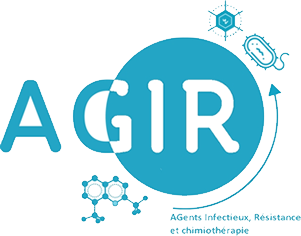Epidemiology and Dynamics of BK Polyomavirus Replication after Kidney Transplantation
Résumé
Background/Objectives: In the absence of an effective antiviral treatment for BK polyomavirus (BKPyV), a better understanding of the epidemiology and time course of BKPyV replication after kidney transplantation is needed to limit the virus’s impact on the graft outcome. Methods: In a 7-year study, we screened more than 430 kidney transplant recipients and analyzed the time course and virological characteristics of BKPyV replication. Results: Urinary viral replication was observed in 116 (27%) of the 430 patients, and 90 of the 116 (78%) had viral DNAemia. Thirty-eight patients (8.8%) were presumed to have nephropathy (DNAemia > 4 log10 copies/mL). Of the patients with BKPyV replication, 48%, 60%, 71%, and 80% were first found to be positive one, two, three, and four months post-transplantation. The initial viral load in the urine was below 7 log10 copies/mL in 100% of the patients with viral replication first detected before the first month, and this proportion was 57% when viral replication was first detected after the first month. When the BKPyV replication was first detected in a urine sample at month 3 or later, 81.5% of patients had concomitant BKPyV DNAemia. The predominant viral subtype was Ib2 (60%), and there was no apparent relationship between the subtype and the time course of BKPyV replication. Conclusions: Urinary BKPyV replication occurs early after renal transplantation and in most patients will increase to a level requiring therapeutic intervention. Close monitoring for BKPyV in the early post-transplantation period would enable the pre-emptive adjustment of the immunosuppression regimen.
Domaines
Maladies infectieuses| Origine | Fichiers éditeurs autorisés sur une archive ouverte |
|---|

